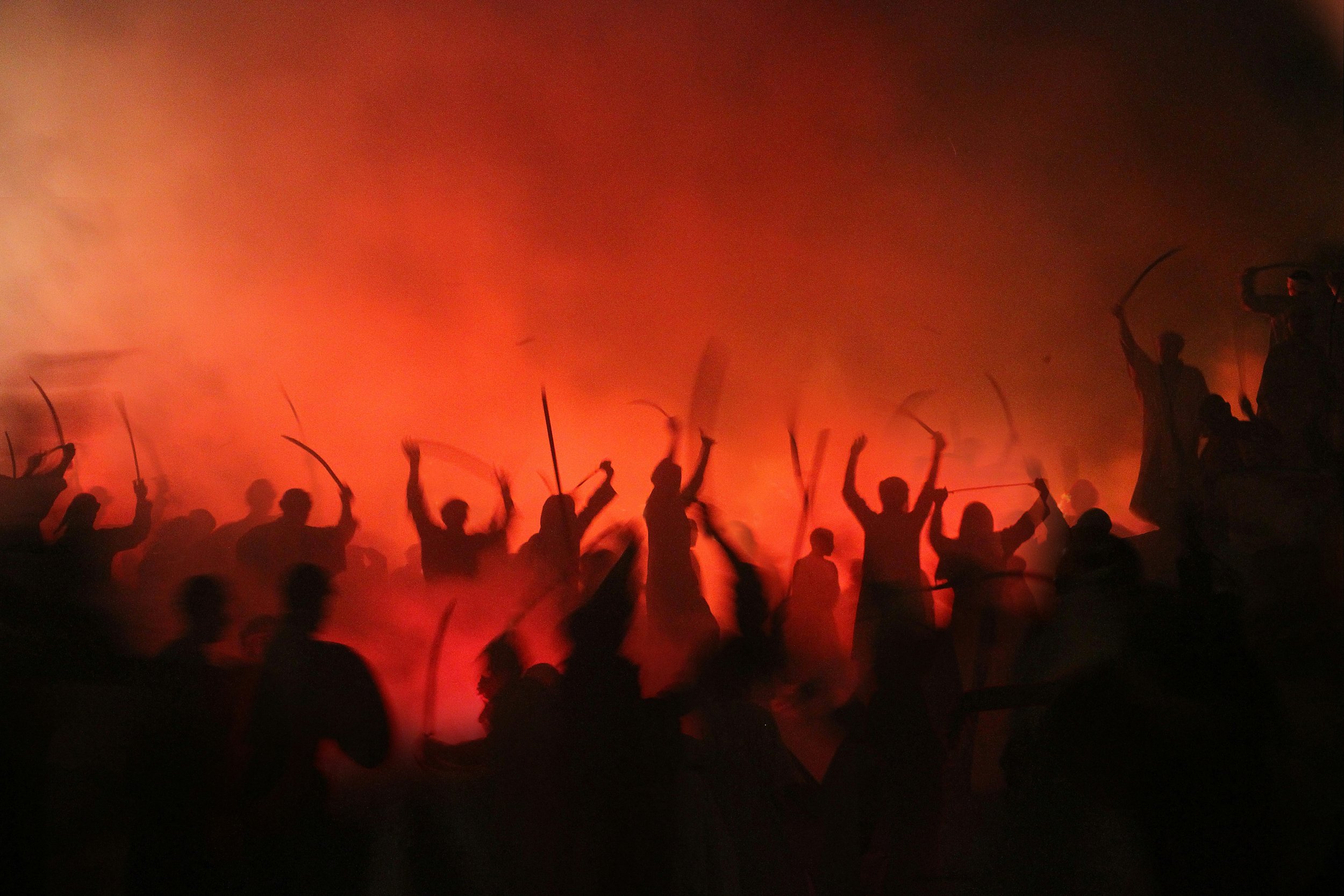How to show happiness in writing (with 5 examples from fiction)
After my recent blog post, I thought we should take a more positive tack. So in this article, we’ll be looking at how to show happiness in writing.
Happy characters can be hard to find in fiction. Thanks to our inciting incident, characters often spend the bulk of a book in some sort of turmoil.
But that doesn’t mean there can’t be fleeting moments of happiness throughout your narrative. Or a happy ending. Or a happy supporting character acting as a foil for your troubled protagonist.
If you want to show that your characters are feeling elated, joyful, excited or simply content, here are my tips on how to describe happiness in writing. And a couple of great examples from fiction too.
Characters with little to be happy about? If you’re depicting feelings on the other end of the positivity spectrum, take a look at my previous post: How to show sadness in writing.
Why you should show happiness (instead of telling)
Let’s start with a quick reminder on the Golden Rule of writing – show don’t tell.
We should always try to have a good balance of showing and telling when it comes to conveying characters’ emotions. In this particular context, it can be far more evocative to show a reader what our characters are feeling, rather than simply stating an emotion.
For example, something like:
She felt joyful.
is a lot less evocative and engaging than:
Her face creased into a smile and she began to laugh.
When you show happiness, rather than tell, you immerse a reader in the emotional and sensory experience of your characters.
You also force them to work a bit harder. Readers are left to seek out the meaning behind a character’s facial expressions, body language and behaviour. And this is something that most readers find very satisfying.
So how do you show happiness in your writing, instead of simply telling a reader about it? Start by taking a look at these tips and ideas.
How to show happiness in writing
Show happiness through character behaviour
A happy character may be full of excited energy. They may bounce around a room, dance a little jig or jump for joy.
Your character could laugh, giggle, chuckle, clap their hands together or cry happy tears. Humming, singing and whistling are a few other signs of a cheerful soul.
And whilst happy characters are often fizzing with energy, you can show a quieter sort of happiness too.
Perhaps a character lingers over a satisfying moment. They might take their time over their first spoonful of ice cream. Or rest their gaze awhile on a much-loved partner.
Show happiness through character interactions
When people feel happy, they’re more open to the world – and to other characters. They’re good-humoured and more likely to see the positive side of things.
They’re also keen to share their happiness with others. That might mean being affectionate, giving more hugs and kisses than usual. It may also mean leaning in (sometimes literally) to a conversation.
Happiness is linked with confidence. So a happy character is likely to feel relaxed about being themselves. They might be playful or goofy in their interactions. They might wear their heart on their sleeve. Or take additional joy in doing something kind for someone else.
Show happiness through facial expressions
A smile is an obvious indication of happiness. But your characters can display anything from a soft half-smile to a full-on grin.
(Some characters smirk. But this is a smile associated with darker emotions rather than genuine happiness.)
Other facial expressions that show a character’s happiness? Crinkling noses. Eyes and mouths wide with excitement.
Facial appearance is important too. Happy characters may be beaming or glowing. They may have flushed cheeks and twinkling eyes. Long-term happiness can leave a person looking fresh-faced and well-rested.
Show happiness through character body language
Body language is another way to show happiness in your writing.
A happy character may have a spring in their step. They may walk at a quicker pace than usual, swinging their arms as they go.
You might have a character fold their hands behind their head. Or use more hand gestures when they’re talking.
The key to happy body language is openness. No folded arms or downcast heads. Instead a happy person is relaxed. Any tension in their body is caused by a thrill of excitement.
Show happiness through speech
You can show happiness through dialogue. Your happy characters are likely to have a glass half-full mentality and their positivity will be clear from what they say.
But it’s not just what your characters say. It’s how they say it too.
When your characters are happy, they’re likely to be animated, speaking more quickly or breathlessly than usual. Their voices may be higher pitched.
Someone overcome with happiness and excitement may shout or whoop. Others may talk breezily, chirpily or exuberantly.
Describe a character’s inner thoughts and feelings
If your chosen point of view gives you access to the inner thoughts and feelings of a character, this is another way to convey their happiness to a reader.
A happy character may be feeling or experiencing any of the following:
Calmness
Lightness
Exhilaration
Confidence
Energy
Satisfaction
Warmth
A sense of ease
A racing heart
An inability to concentrate on the mundane and everyday
A heightened sensory experience
How to describe happiness in writing: 5 examples from fiction
Time to see how a few established authors have chosen to describe happiness in their writing.
From calm contentment to the dizzy excitement of falling in love, all of these happy excerpts provide wonderful writing inspiration.
Normal People – Sally Rooney
Back in fifth year when Connell had scored a goal for the school football team, Rob had leaped onto the pitch to embrace him. He screamed Connell’s name, and began to kiss his head with wild exuberant kisses.
In this excerpt, Connell is thinking back to a simpler, happier time from his past – a time when both he and his friend Rob had been happy.
With screams, leaps, embraces and “wild exuberant kisses”, Rooney shows us the unbridled happiness and excitement that Rob and Connell feel playing and winning within a team.
Tress of the Emerald Sea – Brandon Sanderson
Charlie froze. They’d touched many times before, of course, but this was different. This moment. This dream. He blushed, but let his hand linger. Then he finally raised it and ran his fingers through his hair, grinning sheepishly. Because he was Charlie, that didn’t spoil the moment, but instead only made it more sweet.
Tress searched for the perfect thing to say. There were any number of lines that would have capitalized on that moment. She could have said, “Charlie, could you hold this for me while I walk around the grounds?” then offered her hand back to him.
She could have said, “Help, I can’t breathe. Staring at you has taken my breath away.”
She could even have said something completely insane, such as “I like you.”
Instead she said, “Huuhhh. Hands are warm.” She followed it with a laugh that she choked on halfway through, exactly mimicking—by pure chance—the call of an elephant seal.
It might be said that Tress had a way with words. In that her words tended to get in her way.
In response, Charlie gave her a smile. A wonderful smile, more and more confident the longer it lasted.
Laughing, smiling, blushing, stuttering over words, saying something silly – this is the kind of happiness that comes with realising the person you like, likes you back!
The Blade Itself – Joe Abercrombie
It was a beautiful spring day in Adua, and the sun shone pleasantly through the branches of the aromatic cedar, casting a dappled shade on the players beneath. A pleasing breeze fluttered through the courtyard, so the cards were clutched tightly or weighted down with glasses or coins. Birds twittered from the trees, and the shears of a gardener clacked across from the far side of the lawn, making faint, agreeable echoes against the tall white buildings of the quadrangle. Whether or not the players found the large sum of money in the centre of the table pleasant depended, of course, on the cards they held.
Captain Jezal dan Luthar certainly liked it.
Here, Captain Jezal is content. We know this because of the rose-tinted way in which the setting is being described. The day is beautiful. The sun is shining. Birds are twittering. There’s a pleasing breeze.
A character in a less positive frame of mind may find the clacking of the garden shears irritating. But because Jezal is in such a good mood, everything around him is agreeable.
The Name of the Wind – Patrick Rothfuss
He was portly, with twinkling eyes that moved quickly from one thing to another.
He had a strip of dark grey hair running around the back of his head, but (and this is what I remember most about him) no eyebrows. Rather, he had them, but they were in a perpetual state of regrowing from being burned off in the course of his alchemical pursuits. It made him look surprised and quizzical all at once.
He spoke gently, laughed often, and never exercised his wit at the expense of others. He cursed like a drunken sailor with a broken leg, but only at his donkeys. They were called Alpha and Beta, and Abenthy fed them carrots and lumps of sugar when he thought no one was looking.
Here we have a description of a happy character, Abenthy. He is someone who exudes happiness. He has twinkling eyes, laughs often and behaves kindly towards others, including his two donkeys.
Far from the Madding Crowd – Thomas Hardy
When Liddy came to Bathsheba’s room her mistress was already waiting. Liddy could not understand this extraordinary promptness. “Whatever is going on, ma’am?” she said.
“Well, I’ll tell you,” said Bathsheba, with a mischievous smile in her bright eyes. “Farmer Oak is coming here to dine with me today!”
“Farmer Oak – and nobody else? – you two alone?”
“Yes.”
“But is it safe, ma’am, after what’s been said?” asked her companion, dubiously. “A woman’s good name is such a perishable article that…”
Bathsheba laughed with a flushed cheek, and whispered in Liddy’s ear, although there was nobody present. Then Liddy stared and exclaimed, “Souls alive, what news! It makes my heart go quite bumpity-bump!”
“It makes mine rather furious, too,” said Bathsheba.
In this scene, Bathsheba is feeling happy and excited. Her smile, her bright eyes, her laugh, her flushed cheek and the “bumpity-bump” of her heart all help to show us how she is feeling.
The girlish way in which she whispers to Liddy and her uncharacteristic early rising are other indications of her happy mood.
Want more advice on how to show happiness in writing?
Conveying character emotion is a tricky skill for writers to master. But, get it right, and your readers will find it so much easier to connect and empathise with your characters.
I hope these ideas and excerpts have provided some inspiration for your own writing. But if you could use a little extra help depicting character happiness – or any other emotion – I can help.
As part of my copyediting service, I look at your story, sentence by sentence, and give detailed feedback. You can then have the insight you need to make targeted edits.
Just get in touch if you’d like to hear more about this service, or any of my others.


